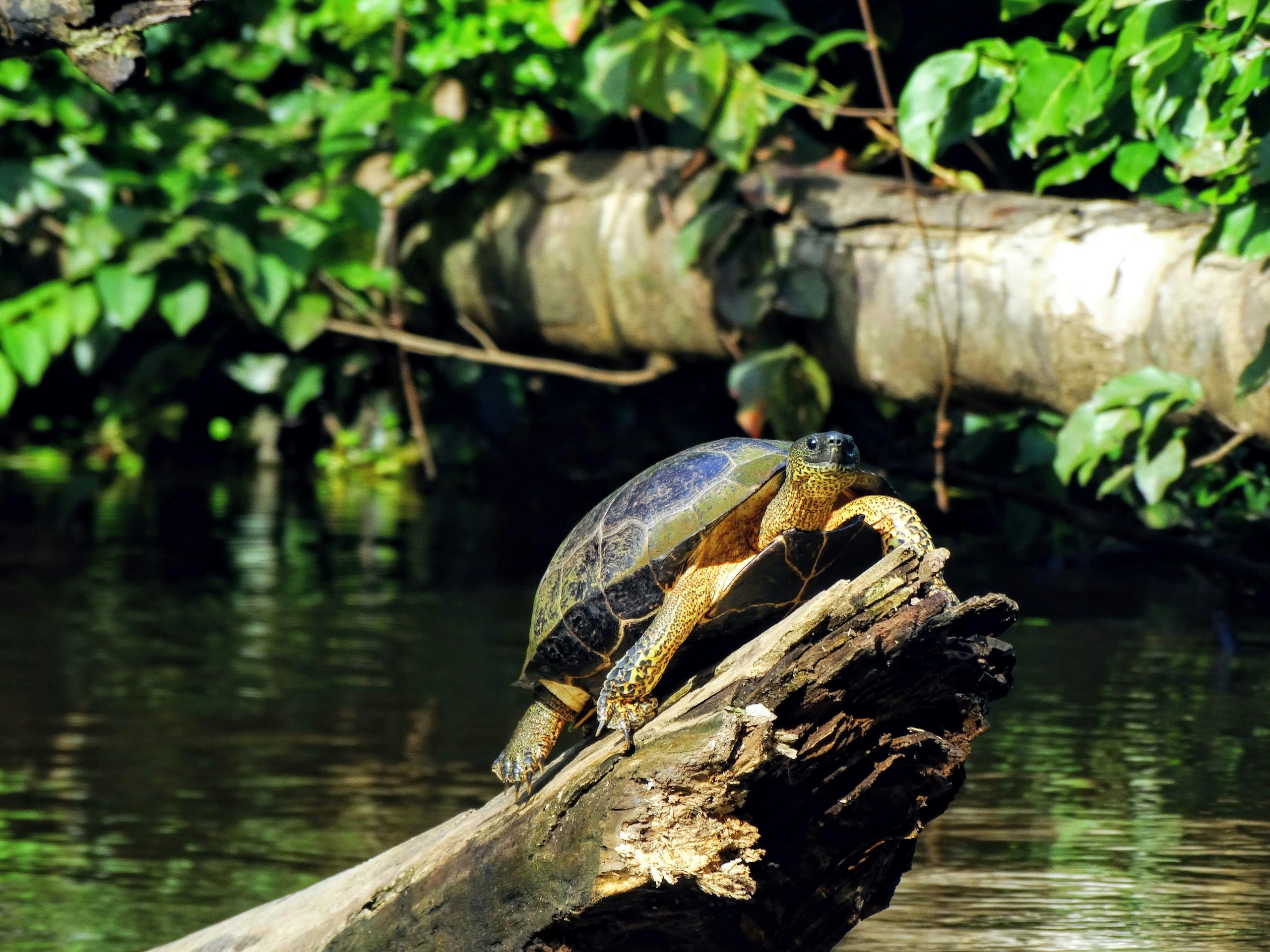If you spend any amount of time herping around rivers, ponds, or marsh edges, you already know turtles are some of the most rewarding finds out there. They’re slow, sure, but spotting a wild turtle in its natural habitat takes more skill than people realize. Most casual hikers walk right past them. But anyone who’s actually put in the time knows that finding turtles near water isn’t luck, it’s reading the habitat, understanding behavior, and knowing what tiny details to watch for.
And for guys who like being outdoors, unplugged, and doing something a little more primal, turtle-tracking hits that perfect mix of calm, strategy, and discovery.
- Learn to Spot the “Outlines”
Turtles are basically optical illusions with legs. Their shells blend into everything, logs, rocks, shadows, you name it. When you’re near water, don’t look for turtles at first. Look for shapes that seem just a little too smooth, too round, or too perfectly domed.
A log that has a darker oval?Check it. A rock with a sharper edge than the rest? Check it. A weird-looking lump that just feels off? Definitely check it.
Nine times out of ten it’s nothing. But the tenth time? It’s a turtle basking and hoping you’ll mind your business.
- Basking Spots Are Your Hot Zones
Middle of the day? Full sun? You’re in prime turtle time.
Turtles spend a huge portion of their lives sunning themselves, especially in cooler months or after a cold night. When you’re herping near water, scan for:
- Partially submerged logs
- Flat rocks at the edge of ponds
- Fallen branches sticking out of the water
- Low, exposed banks
If a spot looks like an easy place to climb onto and warm up, turtles will use it. That’s just the truth of it.
- Listen Before You Look
This is where field herping experience pays off. Turtles aren’t loud, but they’re not silent either. You’ll sometimes hear:
- A soft plop when they slide into the water
- Light scratching as a turtle climbs a log
- Water shifting from a sudden movement
If something sounds like it “fell” into the water, don’t assume fish. Turtles spook fast, especially in pressured areas.
- Watch the Water Surface
A turtle head poking out looks like nothing, just a pebble breaking the surface. But pay attention to:
- Two tiny dark eyes above water
- A little V-shaped ripple
- A long pause followed by a gentle dip
Turtles will sit at the surface and watch you long before you ever notice them.
- Follow Tracks and Trails
If you’re the type who likes to get technical, this is where the fun is.
Check muddy banks for:
- Parallel drag marks from a shell
- Nail impressions from their feet
- Smooth “paths” where they routinely climb out
Tracks tell you a lot: where turtles enter, where they leave, where they nest, and where they bask.
- Understand Their Personality
Wild turtles aren’t like the ones you see in pet stores. They’re skittish, cautious, and they absolutely do not want to interact with you. That’s part of the appeal, earning a sighting feels like a win. If you get too close too fast, they’re gone. No hesitation.
The key is patience. Move slowly. Watch longer than feels reasonable. Most people quit too early.
- Respect the Habitat
This isn’t the preachy part, it’s just practical. If you want good spots to stay good, don’t trample vegetation, flip logs you don’t put back, or scoop up turtles for a photo. Middle-aged guys get this instinctively: you don’t trash the places you like.
Plus, leaving the environment alone means the turtles will stay… which means you’ll keep finding them.
- Bring the Right Gear (Without Looking Like You Just Left REI)
You don’t need a full pack of nonsense. Just be prepared:
- Polarized sunglasses (game changer)
- Boots you don’t care about
- A camera if you’re into documenting
- Patience—honestly the most important gear


0 Comments